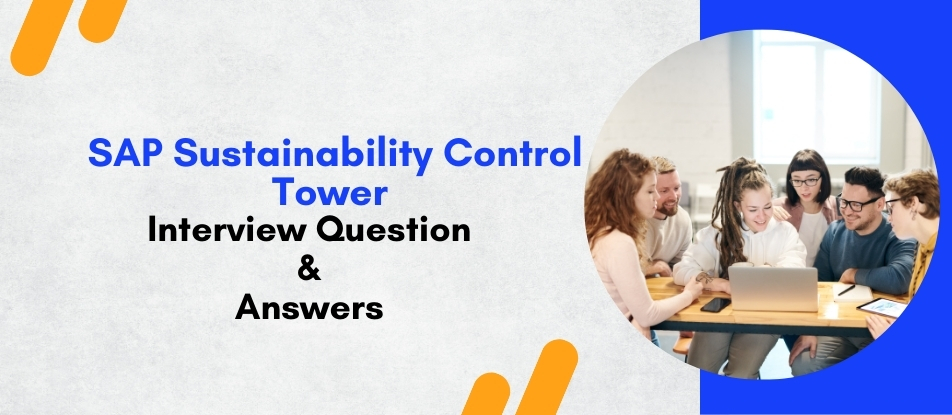
The SAP Sustainability Control Tower Training is designed to help professionals master the end-to-end management of ESG data using SAP’s powerful SCT platform. The course focuses on data integration, KPI tracking, regulatory reporting, and sustainability performance optimization. Participants learn to align environmental, social, and governance goals with business strategies through hands-on labs, real-world use cases, and expert-led instruction using SAP BTP tools.
SAP Sustainability Control Tower Training Interview Questions Answers - For Intermediate
1. How does SAP SCT align sustainability goals with business strategy?
SAP SCT enables organizations to define, track, and align sustainability goals with corporate strategies by linking ESG metrics to financial and operational KPIs. This strategic alignment helps drive responsible growth and long-term value creation.
2. What types of ESG KPIs can be tracked in SAP SCT?
SAP SCT tracks various ESG KPIs such as greenhouse gas emissions, energy intensity, water usage, gender diversity, board composition, waste reduction, and social impact metrics. These KPIs can be tailored to the organization’s goals and compliance needs.
3. How frequently is data updated in SAP SCT?
Data in SAP SCT can be updated in real-time or at scheduled intervals, depending on the integration method and source systems. Organizations can set up periodic data refreshes or automate real-time data pulls through APIs and data connectors.
4. Can SAP SCT support scenario planning?
Yes, SAP SCT includes scenario simulation tools that allow users to model the impact of different sustainability strategies. For example, companies can assess how reducing emissions or changing suppliers affects overall ESG performance and compliance readiness.
5. What is the difference between SAP EHS and SAP SCT?
SAP EHS (Environment, Health, and Safety) focuses on regulatory compliance and operational risk, while SAP SCT provides a strategic, data-driven view of ESG performance. SCT consolidates and visualizes ESG data across the enterprise for broader reporting and decision-making.
6. How does SAP SCT help meet the EU CSRD requirements?
SAP SCT aligns with CSRD standards by supporting double materiality assessments, capturing both financial and ESG data, and enabling detailed disclosures in line with ESRS (European Sustainability Reporting Standards), thus helping companies comply with upcoming EU regulations.
7. What are “data harmonization” capabilities in SAP SCT?
Data harmonization in SAP SCT refers to the platform’s ability to standardize ESG data from different systems and formats. It ensures consistency, quality, and comparability across departments and geographies, enabling consolidated, audit-ready sustainability reports.
8. How customizable is SAP SCT for industry-specific use cases?
SAP SCT offers flexible configuration options and templates tailored to industries such as manufacturing, retail, energy, and financial services. Organizations can customize metrics, dashboards, and reports to align with sector-specific sustainability challenges and compliance standards.
9. How does SAP SCT support stakeholder communication?
SAP SCT enhances stakeholder communication through interactive dashboards, visual storytelling, and structured ESG reports. It helps communicate performance and progress transparently to investors, regulators, employees, and customers, strengthening trust and accountability.
10. Is mobile access supported in SAP SCT?
Yes, SAP SCT is built on the SAP Business Technology Platform (BTP), allowing users to access dashboards and insights through mobile-friendly interfaces and SAP Fiori apps, enabling decision-making on the go.
11. How does SAP SCT contribute to supply chain transparency?
SAP SCT integrates supplier ESG data, enabling visibility into environmental and social performance across the supply chain. This supports risk assessments, ethical sourcing, and responsible procurement strategies aligned with sustainability goals.
12. Can SAP SCT automate ESG data collection?
Yes, SAP SCT automates ESG data collection through integration with SAP and non-SAP systems. It leverages APIs, connectors, and SAP Integration Suite to reduce manual data entry, improve efficiency, and enhance data quality.
13. What role does SAP Analytics Cloud (SAC) play in SAP SCT?
SAP SCT uses SAP Analytics Cloud to visualize sustainability data through advanced dashboards, charts, and storytelling features. SAC enhances the analytical capabilities of SCT, enabling predictive insights and customizable views for various stakeholders.
14. How is user access managed in SAP SCT?
SAP SCT uses role-based access control to manage user permissions. Administrators can define who can view, edit, or approve ESG data and reports, ensuring data security and compliance with corporate governance standards.
15. How does SAP SCT integrate with third-party ESG data providers?
SAP SCT can connect with third-party ESG data providers via APIs and data connectors. This allows companies to enrich their sustainability reporting with external benchmarks, scores, and regulatory databases for better transparency and comparison.
SAP Sustainability Control Tower Training Interview Questions Answers - For Advanced
1. How does SAP Sustainability Control Tower handle the integration of real-time IoT and sensor data for sustainability tracking?
SAP SCT leverages integration with SAP Internet of Things (IoT) services to capture real-time environmental and operational data from sensors across assets, factories, and transportation systems. For instance, data such as energy consumption, air quality, emissions, and equipment status can be streamed into the SCT platform via SAP BTP. This real-time feed allows for granular monitoring of key sustainability metrics such as Scope 1 and 2 emissions or water consumption, and provides alerts when thresholds are exceeded. Additionally, the data can be used to feed predictive models that optimize resource usage, reduce waste, and improve compliance with sustainability goals. This integration helps organizations bridge the gap between physical operations and ESG reporting, ensuring high data accuracy and faster decision-making.
2. What is the role of SAP Product Footprint Management in relation to SAP SCT, and how do they complement each other?
SAP Product Footprint Management (PFM) focuses on calculating the environmental footprint—such as CO₂ emissions—of individual products across their lifecycle. It integrates with SAP S/4HANA to gather material, production, logistics, and energy data for this purpose. While PFM provides micro-level insights at the product level, SAP SCT aggregates and visualizes these insights at a macro-enterprise level. The integration of both solutions allows companies to link product-level impacts to company-wide ESG goals and reporting. For example, if a product has a high carbon footprint, SAP SCT can surface this as a hotspot in dashboards, enabling sustainability teams to act strategically on design, sourcing, or production adjustments. Together, they provide a comprehensive framework for product stewardship and strategic sustainability management.
3. How does SAP SCT support the Sustainable Development Goals (SDGs) and corporate impact alignment?
SAP SCT provides mapping capabilities that align corporate ESG metrics with the United Nations Sustainable Development Goals (SDGs). Organizations can tag sustainability initiatives and performance indicators with relevant SDGs such as clean energy (SDG 7), responsible consumption (SDG 12), or gender equality (SDG 5). The platform enables tracking of both qualitative and quantitative contributions to each goal, fostering transparency in how business operations and investments align with global sustainability priorities. Visual dashboards help communicate impact to stakeholders, while scenario planning tools in SCT can simulate how shifts in operations or strategy affect progress toward SDGs, enabling businesses to optimize their contributions and demonstrate global citizenship.
4. Explain how ESG risk exposure is managed using SAP SCT.
SAP SCT includes functionality to assess and monitor ESG risk exposure by mapping environmental and social risks to business processes, geographies, and supply chains. It allows organizations to score ESG risks based on probability, impact, and time horizon, and link these to risk registers or mitigation strategies. SCT pulls in real-time data from across the enterprise to track compliance breaches, performance deviations, or supplier vulnerabilities. Alerts and workflows can be set up to notify stakeholders of risk escalations. Integration with SAP Risk Management further enriches the analysis with risk simulation and stress-testing capabilities. Overall, SCT offers a dynamic and data-driven method to manage ESG risks across the business.
5. How does SCT support industry-specific regulatory frameworks, like SFDR for financial services or CBAM for manufacturing?
SAP SCT offers customizable templates and compliance modules that align with sector-specific regulations. For financial services, it supports the Sustainable Finance Disclosure Regulation (SFDR) by enabling ESG data aggregation and disclosure aligned with Principal Adverse Impact indicators. For manufacturing, SCT helps companies prepare for the EU Carbon Border Adjustment Mechanism (CBAM) by calculating embedded emissions in imported goods and managing supplier carbon footprints. The system’s flexibility allows businesses to adapt KPIs, reporting formats, and data flows to comply with unique regulatory environments while maintaining data integrity and traceability. Additionally, SCT’s roadmap includes regular updates to support evolving frameworks like SEC climate rules or ISSB standards.
6. How does SAP SCT contribute to stakeholder capitalism and multi-capital reporting?
SAP SCT supports stakeholder capitalism by enabling organizations to track and report on value creation not just for shareholders, but across all stakeholders—employees, communities, suppliers, and the environment. The platform aligns with frameworks like the Integrated Reporting (<IR>) model, allowing users to track multiple forms of capital—financial, manufactured, human, social, and natural. It enables organizations to demonstrate how sustainability initiatives impact these capitals through KPIs and storytelling dashboards. For example, metrics around employee wellbeing, community investment, or biodiversity can be visualized alongside traditional financial data, offering a holistic view of enterprise value creation and fostering transparency in stakeholder relationships.
7. How can SCT support the implementation of an internal carbon pricing mechanism?
SAP SCT helps organizations simulate and implement internal carbon pricing (ICP) by allowing them to assign monetary values to carbon emissions generated by specific operations, business units, or products. This involves linking carbon emissions data (Scope 1/2/3) with cost models configured within SCT. The platform can simulate the financial impact of emissions, support budgeting and forecasting, and evaluate the ROI of low-carbon investments. SCP can also integrate with SAP Profitability and Performance Management (PaPM) for advanced ICP modeling. This incentivizes emission reductions internally, integrates sustainability into financial planning, and prepares the business for external carbon cost exposure.
8. What customization and extension options are available for SAP SCT using SAP BTP?
Using SAP Business Technology Platform (BTP), users can extend SAP SCT in multiple ways, including:
- Developing custom applications using SAP Fiori/UI5
- Creating new APIs or connectors for non-standard systems
- Building advanced analytics using SAP Analytics Cloud and machine learning algorithms
- Automating sustainability workflows using SAP Process Automation
- Enhancing mobility or localization with mobile apps and multi-language support
These capabilities allow organizations to tailor SCT to specific use cases, industry requirements, or internal reporting structures, while maintaining cloud scalability and system resilience.
9. Describe how SAP SCT handles audit trails and data governance for sustainability data.
SAP SCT ensures audit readiness by maintaining detailed audit trails for all ESG data inputs, transformations, and outputs. Each data point is tagged with source details, timestamps, user IDs, and transformation logic, which is critical for regulatory compliance and third-party assurance. SCT supports role-based access control and approvals, ensuring data integrity and governance. Data lineage tools provide visibility into how ESG data flows across systems, allowing for traceability from raw data to published reports. These features ensure transparency, accountability, and compliance with audit and assurance frameworks such as ISAE 3000 or CSRD assurance requirements.
10. How does SCT enable real-time collaboration between sustainability, finance, and operations teams?
SAP SCT facilitates cross-functional collaboration by offering shared dashboards, goal tracking, and commentary features across sustainability, finance, and operations. Each function can access relevant ESG metrics and align their planning and decisions accordingly. For instance, sustainability teams can highlight emissions hotspots, finance can allocate budgets for carbon reduction, and operations can adjust processes to meet targets. Role-based views and notification workflows ensure that stakeholders stay informed and engaged in real time. This collaboration supports integrated decision-making and enhances organizational alignment with sustainability strategies.
11. Can SCT support sustainability-linked performance bonuses or executive incentives? If so, how?
Yes, SAP SCT can track sustainability KPIs that are tied to executive compensation and employee performance bonuses. The system allows organizations to define performance indicators such as emission reductions, diversity ratios, or resource efficiency targets, and assign them to responsible departments or individuals. These metrics can be integrated with HR and finance systems to support variable pay structures. By automating performance tracking and reporting, SCT ensures transparency, accountability, and motivation for achieving sustainability targets, thus reinforcing ESG commitment at all organizational levels.
12. How is ESG data quality ensured in SAP SCT, and what validation methods are used?
SAP SCT uses multi-layered validation techniques to ensure data quality. These include:
- Automated data checks for range, format, and completeness
- Pre-validation against master data tables
- Duplicate detection and flagging of inconsistencies
- Manual review workflows for high-risk data
- Audit logs for every change or data load
Additionally, SCT supports integration with SAP Master Data Governance (MDG) to maintain consistent data structures and hierarchies. These validation controls ensure that sustainability reports are accurate, reliable, and compliant with external assurance requirements.
13. What is the impact of SAP SCT on ESG ratings and investor relations?
SAP SCT enhances ESG ratings by providing credible, consistent, and timely data that aligns with rating agency methodologies. It enables companies to proactively identify performance gaps, prepare disclosures, and respond to rating agency queries with confidence. Improved ESG ratings can lead to better access to capital, inclusion in ESG indexes, and stronger investor trust. SCT also supports investor relations by offering investor-specific dashboards and reports that highlight key ESG achievements and forward-looking goals, reinforcing a company’s sustainability narrative.
14. How does SAP SCT manage multi-country and multi-regional compliance and reporting?
SAP SCT supports multi-regional reporting by allowing organizations to define region-specific reporting structures, compliance requirements, and metric thresholds. The platform can generate customized ESG reports for different jurisdictions, such as CSRD in the EU, SECR in the UK, and TCFD disclosures in the APAC region. Localization features include currency conversion, regional emission factors, language options, and calendar settings. The system also supports conditional logic to adapt workflows and validations based on country-specific laws, ensuring seamless compliance management across complex global operations.
15. How does SAP SCT fit into a broader digital transformation strategy for sustainability?
SAP SCT acts as a cornerstone in an enterprise’s digital sustainability transformation. It integrates ESG data into digital core systems, aligning sustainability with ERP, finance, supply chain, and HR functions. SCT not only enables compliance and reporting but drives proactive ESG strategy by providing predictive insights and real-time analytics. When combined with tools like SAP S/4HANA, SAP Analytics Cloud, and SAP Integrated Business Planning (IBP), it creates a closed-loop system where sustainability data informs decisions across planning, execution, and performance. This convergence makes SCT critical for embedding sustainability into the DNA of a digitally transformed, future-ready enterprise
Course Schedule
| Dec, 2025 | Weekdays | Mon-Fri | Enquire Now |
| Weekend | Sat-Sun | Enquire Now | |
| Jan, 2026 | Weekdays | Mon-Fri | Enquire Now |
| Weekend | Sat-Sun | Enquire Now |
Related Courses
Related Articles
- How Siemens NX Open API Simplifies Customization and Engineering Automation
- Understanding the Role of SAP Integration Suite in SAP CPI for Digital Transformation
- Mastering Engineering Simulations: A Complete Guide to Abaqus Training
- Oracle Primavera Cloud - Schedule Management: From Complexity to Clarity
- Why Emerson DeltaV DCS is Essential for Oil, Gas & Pharma Engineers
Related Interview
- Plant Design using CADWorx Plant Professional Training Interview Questions Answers
- SAP Integrated Business Planning (IBP) - Interview Question Answers
- COMOS P&ID (COM-PID) Admin Training Interview Questions Answers
- AWS Quicksight Training Interview Questions Answers
- ETAP Software Training Interview Questions Answers
Related FAQ's
- Instructor-led Live Online Interactive Training
- Project Based Customized Learning
- Fast Track Training Program
- Self-paced learning
- In one-on-one training, you have the flexibility to choose the days, timings, and duration according to your preferences.
- We create a personalized training calendar based on your chosen schedule.
- Complete Live Online Interactive Training of the Course
- After Training Recorded Videos
- Session-wise Learning Material and notes for lifetime
- Practical & Assignments exercises
- Global Course Completion Certificate
- 24x7 after Training Support


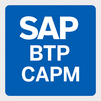
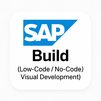
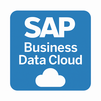
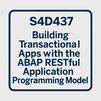

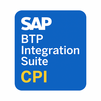
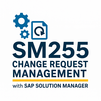


 Join our Live Instructor-Led online classes delivered by industry experts
Join our Live Instructor-Led online classes delivered by industry experts